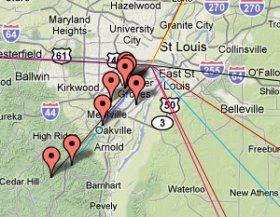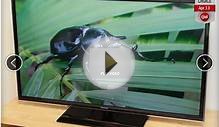
What TV Antenna should I buy?

|
||||||
Very typical concerns we obtain at Antennas Direct is "what's the correct television antenna for my area?"
We look for ourselves over repeatedly recommending our ClearStream™ and Bowtie a number of antennas since they function perfectly in almost all places. Since these antennas and generally are multi-directional, they're ideal for places where in fact the broadcast towers are not located or when you're attempting to capture indicators from multiple urban centers. Furthermore, multi-directional antennas work well just because all of the broadcast towers tend to be consolidated in a single area as we see in ny, Chicago, and Los Angeles.
 Use our length chart to determine the correct television antenna for your location:
Use our length chart to determine the correct television antenna for your location:
Need More Help?
While our ClearStream™ and Bowtie antennas work very well is many locations, we also offer various other antennas to fulfill your needs. We've reviewed the largest urban centers within the U.S. and offered a listing of which antennas work best by which cities.
View Antenna Recommendations for Major Metro Areas for a listing of locations and their programs. Should you not live in an important U.S. city, these pages will go you through the procedure of determining the sort of antenna that perform the very best.Scroll down seriously to see whether your channels come in UHF or VHF frequency. Obviously, many people don't want to outfit their home with many antennas, therefore some tradeoffs are typically made. With this chart you can easily figure out the type (UHF or VHF), energy, and style antenna which should work best.
2. Check to see if all electronic stations in your area broadcast regarding UHF band.
Look in articles entitled "Channel" and "Band" or relate to our listing of digital stations broadcast in the VHF band. If you want to obtain low-frequency VHF programs (stations 2-8) you may need a VHF antenna.
 3. Figure out how far will your antenna be through the transmitters?
3. Figure out how far will your antenna be through the transmitters?
Glance at the "Dist." line on far right-side for the chart after which select from the annotated following:
- Indoor: 0-15 Kilometers
- Short Range: 0-25 Kilometers
- Medium Range: 10-55 Kilometers
- Long-range: 50-70+ Kilometers
4. Determine whether you'll need a uni-directional or multi-directional TV antenna?
In a few places like nyc, Chicago, and l . a ., all programs tend to be transmitted from central location, the Empire State and GE Buildings in ny, the Sears Tower or Hancock Building in downtown Chicago, and Mt. Wilson in Los Angeles. In other towns and cities like St. Louis, the transmitters tend to be scattered round the town.
Look at the "Heading" and when all of your desired stations are transmitting from the same location or within 20° of each other you can make use of a uni-directional antenna. If the transmitters are put significantly more than 20° apart, it's always best to use a multi-directional antenna. It is vital to observe that many multi-directional antennas is going to work in place of uni-directional antennas, however you may pick up some multi-path distortion.
RELATED VIDEO



Share this Post
Related posts
HDTV antenna, Outdoor
Advantages: It s small, the post is flexible and it also is sold with components to attach to a mast (which I didn t usage)…
Read MoreBest TV antenna for home
An engine home or travel trailer could be equipped to view television on the highway. The primary RV task is seeing the whole…
Read More










